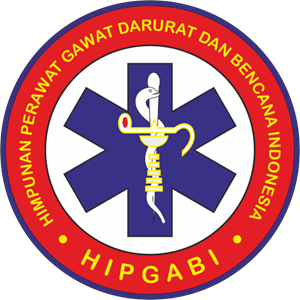Family's Experience Dealing with Critical Patient Hospitalization in the Intensive Care Unit
Downloads
Introduction: The Intensive Care Unit (ICU) is a treatment that can cause feelings of stress, anxiety, and fear not only in the patient but also in the patient's family. The unfamiliar environment, intensive space regulation, changes in emotional status, and changes in daily activities cause stress in the ICU patient's family. The purpose of this study is to reveal the experiences of families facing hospitalization in intensive care units based on empirical studies in the last five years.
Methods: Journal searches use indexed databases Scopus, Proquest, ScienceDirect, and PubMed using keywords: hospitalization, family, critical patient, ICU. The Center for Review and Dissemination and The Joanna Briggs Institute were used to assess the quality of the study. The framework used is PICOS with inclusion criteria, namely journals in English and Indonesian, published years 2015 to 2020. Analyzes and tabulation of data on articles or journals, titles, abstracts, full text, and methodology are assessed to determine the eligibility of articles or journals.
Result: The family's experience in critical patient hospitalization in the ICU care room impacts the family's treating these patients physically and psychologically. During patient hospitalization, the family plays a role in providing care, and compassion, creating security and privacy, and advocating for and ensuring that patients receive good care.
Conclusion: The hospitalization experience can disrupt the client's psychology and psychosocial condition, especially if the client cannot adapt to his new environment at the hospital. The patient must have a vital source of support to support healing. One of these supports can be obtained from the patient's family.
Al-Mutair, A. S., Plummer, V., O'Brien, A., & Clerehan, R. (2013). Family needs and involvement in the intensive care unit: A literature review. Journal of Clinical Nursing, 22(13–14), 1805–1817. https://doi.org/10.1111/jocn.12065
Apriadisiregar, P. A., Gurning, F. P., Eliska, E., & Pratama, M. Y. (2018). Analysis of Factors Associated with Pulmonary Tuberculosis Incidence of Children in Sibuhuan General Hospital. Jurnal Berkala Epidemiologi, 6(3), 268. https://doi.org/10.20473/jbe.v6i32018.268-275
De Almeida Moraes Gibaut, M., Hori, L. M. R., Freitas, K. S., & Mussi, F. C. (2013). Comfort of the patient's family in an intensive care unit related to welcoming. Revista Da Escola de Enfermagem, 47(5), 1114–1121. https://doi.org/10.1590/S0080-623420130000500015
Grant, C. J., Doig, L. F., Everson, J., Foster, N., & Doig, C. J. (2020). Impact of Patient and Family Involvement in Long-Term Outcomes. Critical Care Nursing Clinics of North America, 32(2), 227–242. https://doi.org/10.1016/j.cnc.2020.02.005
Herawati, M., & Fithriyani, F. (2018). PENGALAMAN KELUARGA MENGHADAPI HOSPITALISASI PASIEN KRITIS DI RUANG ICU RS Dr. BRATANATA JAMBI. Jurnal Akademika Baiturrahim Jambi, 7(1), 33. https://doi.org/10.36565/jab.v7i1.63
Mardiono, S. (2018). Tingkat Kecemasan Keluarga terhadap Perubahan Status Kesehatan pada Pasien Kritis di Ruang Rawat Inap Intensif Care Unit (ICU) Rumah Sakit Pelabuhan Palembang Tahun 2017. Jurnal 'Aisyiyah Medika, 2, 121–139.
Oppenheim, I. M., Lee, E. M., Vasher, S. T., Zaeh, S. E., Hart, J. L., & Turnbull, A. E. (2020). Effect of Intensivist Communication in a Simulated Setting on Interpretation of Prognosis Among Family Members of Patients at High Risk of Intensive Care Unit Admission: A Randomized Trial. JAMA Network Open, 3(4), e201945. https://doi.org/10.1001/jamanetworkopen.2020.1945
Padila, Muhammad Amin, R. (2013). Pengalaman Ibu Dalam Merawat Bayi Preterm Yang Pernah Dirawat Di Ruang Neonatus Intensive Care Unit (Nicu). Journal of Chemical Information and Modeling, 53(9), 1689–1699. https://doi.org/10.1017/CBO9781107415324.004
Parsons, L. C., & Walters, M. A. (2019). Management Strategies in the Intensive Care Unit to Improve Psychosocial Outcomes. Critical Care Nursing Clinics of North America, 31(4), 537–545. https://doi.org/10.1016/j.cnc.2019.07.009
Rosidawati, I., & Hodijah, S. (2019). Hubungan Antara Lama Rawat Dengan Tingkat Kecemasan Keluarga Pasien Di Ruang Intensive Care Unit Rsud Dr Soekardjo Kota Tasikmalaya. Jurnal Keperawatan Muhammadiyah Bengkulu, 7(1), 33–38. https://doi.org/10.36085/jkmu.v7i1.308
Safitri, D. N. R. P., Trisyani, Y., Nuraei, A., & Wangi, K. Y. W. (2019). Pengalaman Keluarga Selama Proses Pendampingan Pasien di Ruang GICU : Studi Fenomenologi. PROFESI (Profesional Islam) ; Media Publikasi Penelitian, 17(1), 29–37.
Sentana, A. D. (2016). Analisis Faktor-Faktor yang Mempengaruhi Tingkat Kecemasan Keluarga Pasien yang Dirawat di Ruang Intensif Care RSUD Provinsi NTB Tahun 2015. Journal of Chemical Information and Modeling, 53(9), 1689–1699. https://doi.org/10.1017/CBO9781107415324.004
Wardah. (2013). Dampak Hospitalisasi Pada Keluarga Dan Peran Perawat Dalam Memenuhi Kebutuhan Informasi Di Perawatan Intensif. Jurnal Husada Mahakam, III(6), 263–318.
Copyright (c) 2021 Maria Theresia Dhiu, Ninuk Dian Kurniawati, Andri Setya Wahyudi

This work is licensed under a Creative Commons Attribution 4.0 International License.
1. The journal allows the author to hold the copyright of the article without restrictions.
2. The journal allows the author(s) to retain publishing rights without restrictions.
3. The legal formal aspect of journal publication accessibility refers to Creative Commons Attribution (CC BY).

















